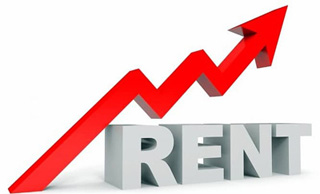Quote Of The Week
“Finding solutions to the issue of affordable housing is imperative, as it poses one of the country’s biggest challenges, and we must work together to address it.”
Master Builders Australia chief executive Denita Wawn
The Real Crisis Issue
 Lack of supply and growing demand are not the only issues causing Australia’s housing crisis, according to new research from LongView and PEXA.
Lack of supply and growing demand are not the only issues causing Australia’s housing crisis, according to new research from LongView and PEXA.
It also pinpoints high population growth, urban concentration and a shortage of well-located residential land near job nodes and services as contributing factors.
The research says house prices have grown much faster than incomes at a compound annual growth rate of 7.2%.
PEXA CEO Glenn King, says it now takes Australians up to 14 years on a median salary to save for a deposit on a typical mortgage, which makes it harder for young people to enter the market.
“Many first home buyers, who are forced to buy far from the centre of cities, are denied the opportunities that may increase their quality of life, including access to the higher paying jobs in the central city and employment hubs,” King says.
“They aren’t reaping the economic benefits that living in a city should bring.”
Rents To Rise Another 11%
 Rents are tipped to keep rising and are unlikely to hit their peak until early next year according to new analysis by Westpac.
Rents are tipped to keep rising and are unlikely to hit their peak until early next year according to new analysis by Westpac.
Westpac Business and St George senior economist Pat Bustamante says the situation is likely to be longer and more severe than previous rent rise cycles.
He predicts asking rents will increase by 11.5% this year, resulting in a national asking rent of $633 a week.
“Given the current supply and demand dynamics, and the lag in supply, the peak would likely take longer than people expect,” he says.
“The return of migrants and international students is providing an important injection of labour supply, but it’s also putting a further strain on the rental market.”
Bustamante says supply is sluggish at the moment as a result of rising interest rates and a lag between approvals and construction.
“Which means we’re unlikely to see a reasonable amount of new supply until the middle of 2024,” Bustamante says.
Banks Paying For Customers
 Banks are continuing to pay customers for their home loan business, with almost 50 lenders now offering cash back or other incentives.
Banks are continuing to pay customers for their home loan business, with almost 50 lenders now offering cash back or other incentives.
The competition is tipped to pick up pace even further, as up to $320 billion worth of fixed loans which were taken out when interest rates were low, are expected to finish their fixed term this year.
The Commonwealth Bank has admitted it is even writing unprofitable loans in an effort to secure a higher market share.
Rate City analyst Sally Tindall says about $19 billion worth of loans are being refinanced every month.
She warns homeowners to be cautious.
“With every deal, there is a winner and a loser, and banks don’t want to be on the losing end if they want to grow their loan books,” she says.
Incentives on offer include: free NBN access for three years, frequent flyer points for every year of the life of a loan, and up to $10,000 cash back.
Builders Want More Help

Building industry groups are calling for housing to be considered a core infrastructure priority for the federal Government and want up to $20 billion in funding for the sector.
Master Builders Australia chief executive Denita Wawn told a Senate hearing, the proposed Housing Australia Future Fund is not ambitious enough and should consider doubling its proposed capital investment.
The $10 billion fund is designed to pay for 30,000 new social and affordable housing properties over five years.
“Finding solutions to the issue of affordable housing is imperative as it poses one of the country’s biggest challenges, and we must work together to address it,” Wawn says.
According to figures from Master Builders Australia in the next five years new housing will fall short of the 200,000 homes needed annually until 2026/2027.
“However, to meet the additional 800,000 dwellings needed by 2035, the size of the fund’s capital investment should be expanded from $10 billion to $20 billion,” she says.
Sharing The Solution
 With the rental crisis not expected to ease anytime soon, more Australians are entering into share-home arrangements.
With the rental crisis not expected to ease anytime soon, more Australians are entering into share-home arrangements.
Flatshare.com.au, which introduces flatmates and house sharers to each other, says it has experienced an increase in people looking for a share house or flat.
Flatshare community manager Claudia Conley says there has also been an increase in people aged over 55 looking for a spare room in an established house and homeowners looking for lodgers.
She says 68,000 people registered on the website in January and there has been a 20% increase in activity in the past year.
Conley believes there are 12 million empty rooms in Australia.
With growing demand for sharing accommodation, it’s thought some investors may explore letting their property as a flat share rather than a single tenant lease.
The sharing trend is set to continue for the next few years, as rents rise, mortgage holders face higher interest repayments and the supply of affordable housing is sluggish.




